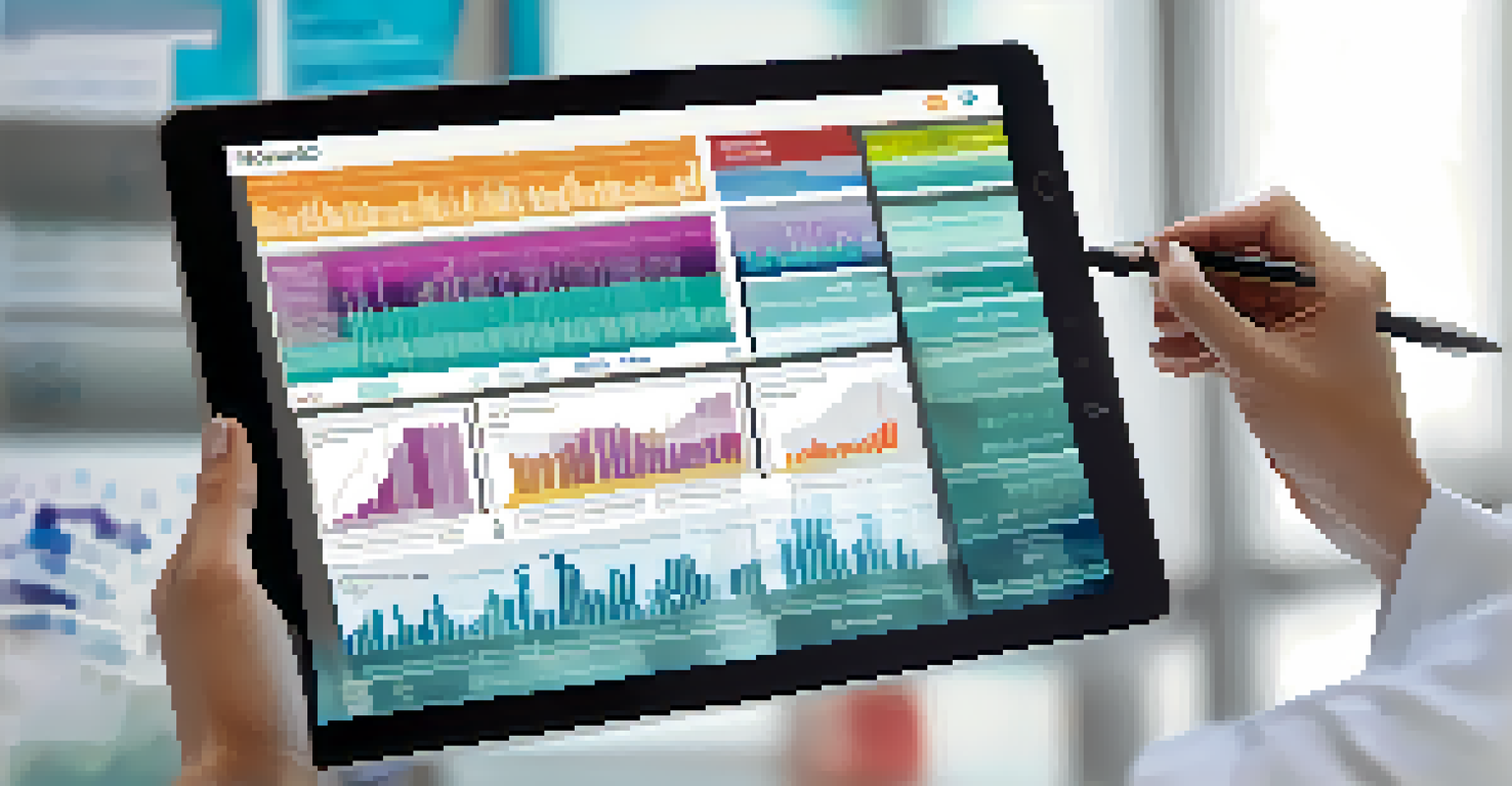Healthcare Collaboration: Digital Tools for Team-Based Care

The Importance of Team-Based Care in Healthcare
Team-based care is becoming a cornerstone of effective healthcare delivery. By fostering collaboration among various healthcare professionals, patient outcomes can significantly improve. This approach allows for diverse expertise to come together, creating a more holistic treatment plan tailored to individual needs.
Alone we can do so little; together we can do so much.
Imagine a sports team where each player brings their unique skills to the game. Similarly, in healthcare, each team member—be it a doctor, nurse, or therapist—contributes to a shared goal: the patient's well-being. This synergy not only enhances the quality of care but also streamlines communication, reducing the chances of errors.
Incorporating technology into team-based care makes this collaboration even more effective. Digital tools help bridge gaps in communication and ensure that everyone is on the same page, ultimately leading to better health outcomes for patients.
Digital Tools That Enhance Healthcare Collaboration
Digital tools are revolutionizing the way healthcare teams collaborate. Platforms like electronic health records (EHR) enable real-time sharing of patient information, ensuring that all team members have access to the latest updates. This transparency is crucial for informed decision-making and improving patient care quality.

Consider a scenario where a patient visits multiple specialists. Without digital tools, vital information could be lost in the shuffle. However, with EHRs, every doctor involved in the patient's care can view their complete medical history, making coordination seamless and efficient.
Teamwork Enhances Patient Care
Team-based care fosters collaboration among healthcare professionals, leading to improved patient outcomes through a holistic treatment approach.
Moreover, communication tools like secure messaging apps allow for quick consultations, even outside of office hours. This immediacy can be life-saving, particularly in urgent situations where timely intervention is required.
The Role of Telemedicine in Team-Based Care
Telemedicine has emerged as a game changer in healthcare collaboration. By allowing healthcare providers to consult with each other and with patients remotely, it removes geographical barriers that once hindered effective teamwork. This accessibility is especially beneficial in rural areas where specialist services may be limited.
The whole is greater than the sum of its parts.
For instance, a primary care physician can easily connect with a specialist during a patient consultation via video conferencing. This instant access to expert opinions not only enhances patient care but also fosters a collaborative environment among healthcare professionals.
Furthermore, telemedicine facilitates follow-up appointments and ongoing care management, keeping teams engaged with patients beyond the traditional office visit. This continuous support helps maintain patient engagement and adherence to treatment plans, driving better health outcomes.
Benefits of Collaborative Care for Patients
Patients stand to gain significantly from collaborative care models. With multiple professionals working together, they receive more comprehensive and personalized treatment. This coordinated approach minimizes the risk of conflicting medical advice and ensures that all aspects of a patient's health are considered.
Think of it like having a personal coach for your health; with a team behind you, you’re more likely to stay motivated and achieve your goals. Patients often feel more supported and informed, leading to increased satisfaction with their care experience.
Digital Tools Streamline Communication
Digital tools like electronic health records and secure messaging enhance collaboration by ensuring real-time sharing of patient information among healthcare teams.
Moreover, when healthcare teams collaborate effectively, they can identify potential health issues earlier. This proactive approach not only enhances the overall quality of care but can also lead to cost savings for both patients and the healthcare system.
Challenges in Implementing Digital Collaboration Tools
Despite the clear benefits, implementing digital collaboration tools in healthcare is not without challenges. Resistance to change is common in any industry, and healthcare is no exception. Some professionals may be hesitant to adopt new technologies, fearing it will disrupt their established workflows.
Additionally, data privacy and security concerns can pose significant barriers. Healthcare providers must ensure that any digital tools they use comply with regulations like HIPAA to keep patient information secure. This requires ongoing training and vigilance to protect sensitive data.
Finally, the integration of various digital tools can be complex. Healthcare organizations need to invest time and resources into ensuring that these tools work seamlessly together, which can be a daunting task in a fast-paced environment.
Best Practices for Successful Digital Collaboration
To maximize the benefits of digital collaboration tools, healthcare organizations should adopt best practices tailored to their specific needs. First, investing in comprehensive training for all team members is crucial. This ensures that everyone feels confident using the tools and understands their importance in enhancing patient care.
Second, fostering a culture of openness and communication can significantly impact the effectiveness of collaboration. Encouraging team members to share insights and feedback about the tools can lead to continuous improvement and greater buy-in.
Telemedicine Breaks Geographical Barriers
Telemedicine allows healthcare providers to consult remotely, facilitating teamwork and improving access to specialist care, especially in rural areas.
Lastly, it's essential to regularly evaluate the effectiveness of the digital tools in use. Gathering data on outcomes and user satisfaction can help organizations identify areas for improvement and ensure that the tools are meeting their intended goals.
The Future of Healthcare Collaboration and Digital Tools
As technology continues to evolve, the future of healthcare collaboration looks promising. Innovative digital tools are being developed that further streamline communication and coordination among healthcare teams. Artificial intelligence, for instance, may play a role in predicting patient needs and enhancing decision-making.
Moreover, as more healthcare professionals embrace telemedicine and other digital solutions, we can expect an increase in patient-centered care models. These models prioritize the patient's experience and outcomes, ultimately leading to higher satisfaction and better health.

In essence, the integration of technology in healthcare collaboration is not just a trend but a fundamental shift. By harnessing the power of digital tools, healthcare teams can work more effectively, ensuring that patients receive the best care possible.